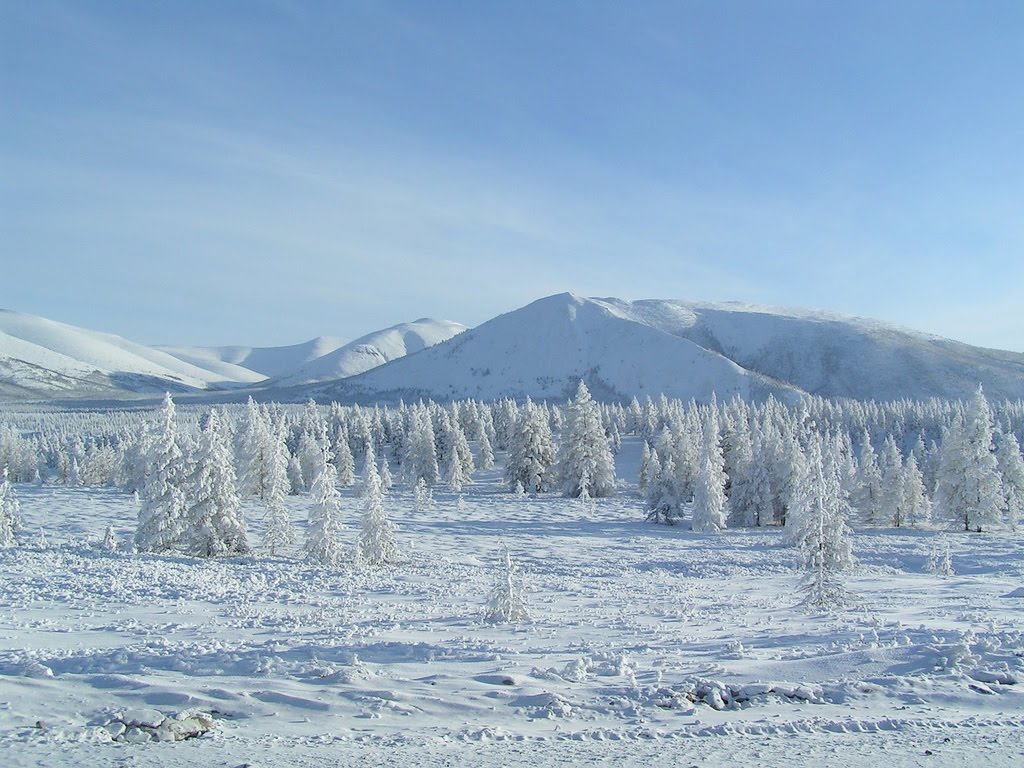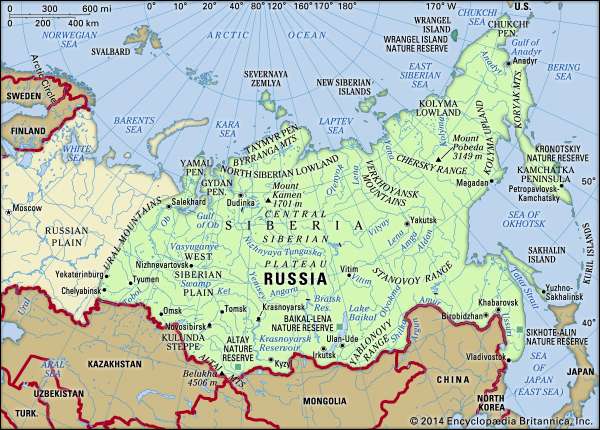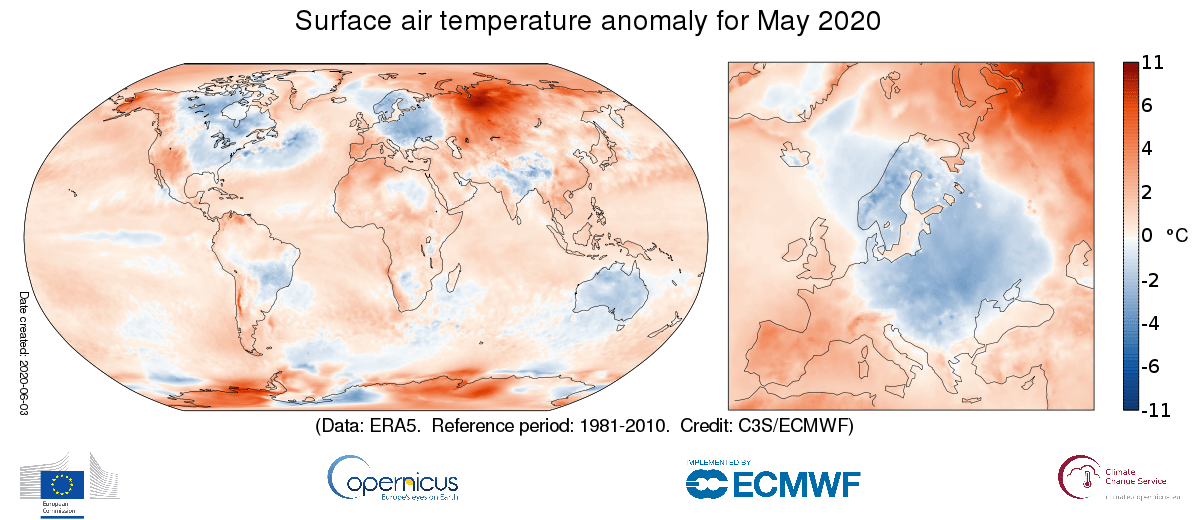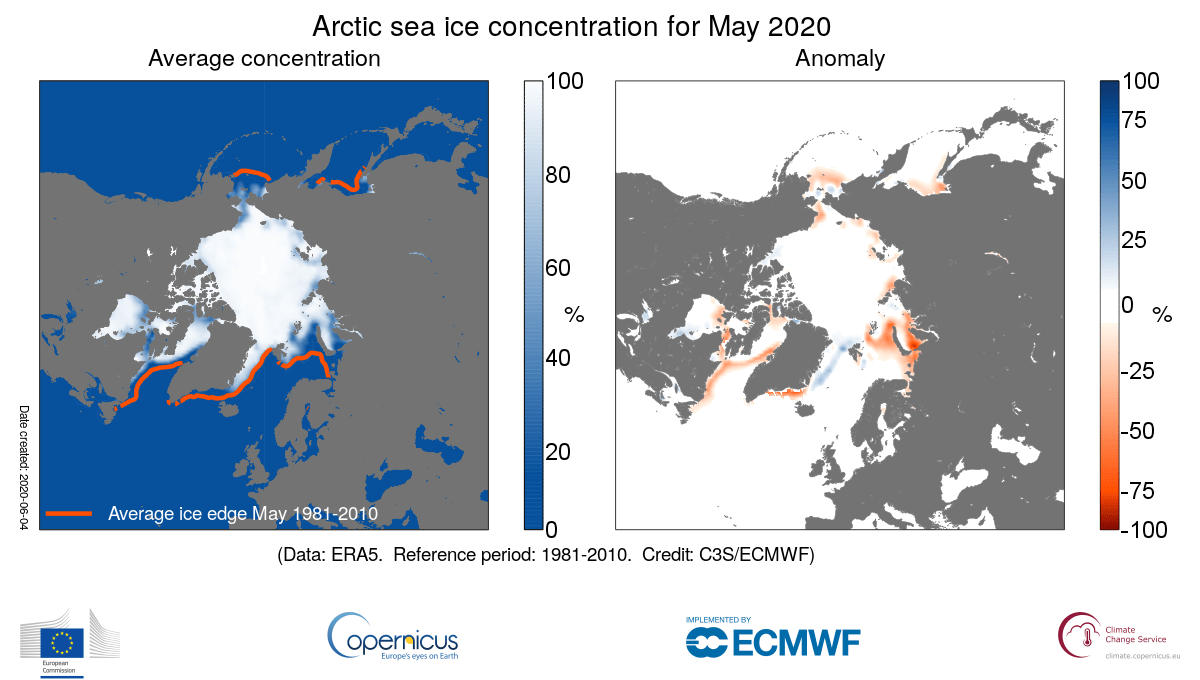
Yes, you read that correctly, May 2020 was 18ºF (10ºC) warmer than average in Siberia. The average temperature in May typically ranges from about 36ºF (2ºC) to 57ºF (14ºC) with a mean temperature of 47ºF (8ºC). While this might seem like a good opportunity to visit Siberia and not freeze, it is in fact not a good sign for the Earth at large.
On top of Siberia being 18ºF warmer than average, last month was also the hottest May on record globally according to the European Union’s climate monitoring network. It is important to note that the difference between the EU model and the NOAA model is that the frequency data is sampled. Although the two models have slightly different findings they generally have the same conclusions.

If you are wondering what “warmer than average” actually means you are probably not alone. In climatology, a 30-year average is used to compare temperature and precipitation to the last three decades. That means current data is based on the 1981-2010 averages.
Over the last few months, western Siberia has been unusually warm according to the Copernicus Climate Change Service (C3S). In the period from March 2020 to May 2020, the warm temperatures in Siberia were “highly anomalous”. Over the last twelve-month period, the global average temperature has been 2.3ºF (1.3ºC) above pre-industrial levels.
This may not seem like a big difference, however, the Intergovernmental Panel on Climate Change (IPCC) determined that if global temperatures rise more than 3.6ºF (2ºC) there will be irreversible damage to our planet. Even a 2.7ºF (1.5ºC) increase in temperature could permanently alter our Earth and since the mid 19th century we have already seen about a 1.8ºF (1ºC) increase in global temperature. This increase in global temperature has been mostly due to the burning of fossil fuels.


Since 2002 the globe has had a sustained period of above-average temperatures with the last five years being the hottest on record as well as the last decade being the hottest on record. Although global temperatures have not risen past the benchmark of 2ºC, temperatures in the Arctic have risen more than 2ºC since the mid 19th century already. In the last year, Greenland has lost 672 billion tons of ice mass which equates to about 40% of sea-level rise in 2019. In addition, permafrost is thawing at unprecedented rates releasing carbon dioxide that has been sequestered in the ground for millennia into the atmosphere.

According to the United Nation, over the next decade, the world needs to cut human greenhouse gas emissions by 7.6% in order to reach the Paris Climate Accord goal of a 1.5ºC cap on global warming. It is projected that if we stay on the current course, the world will see at least several degrees of warming, if not more. Overall, Siberia and the Arctic as a whole are the world’s early warning system, and — if we don’t heed the alarm —our climate could look much different by mid-century.
